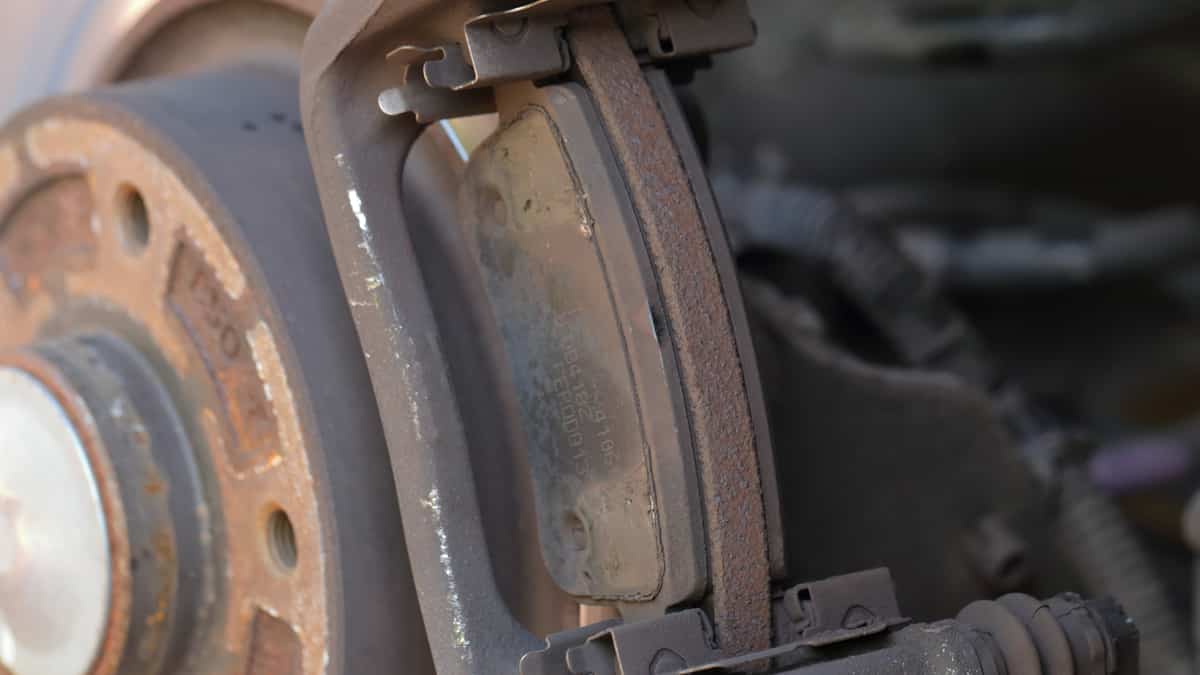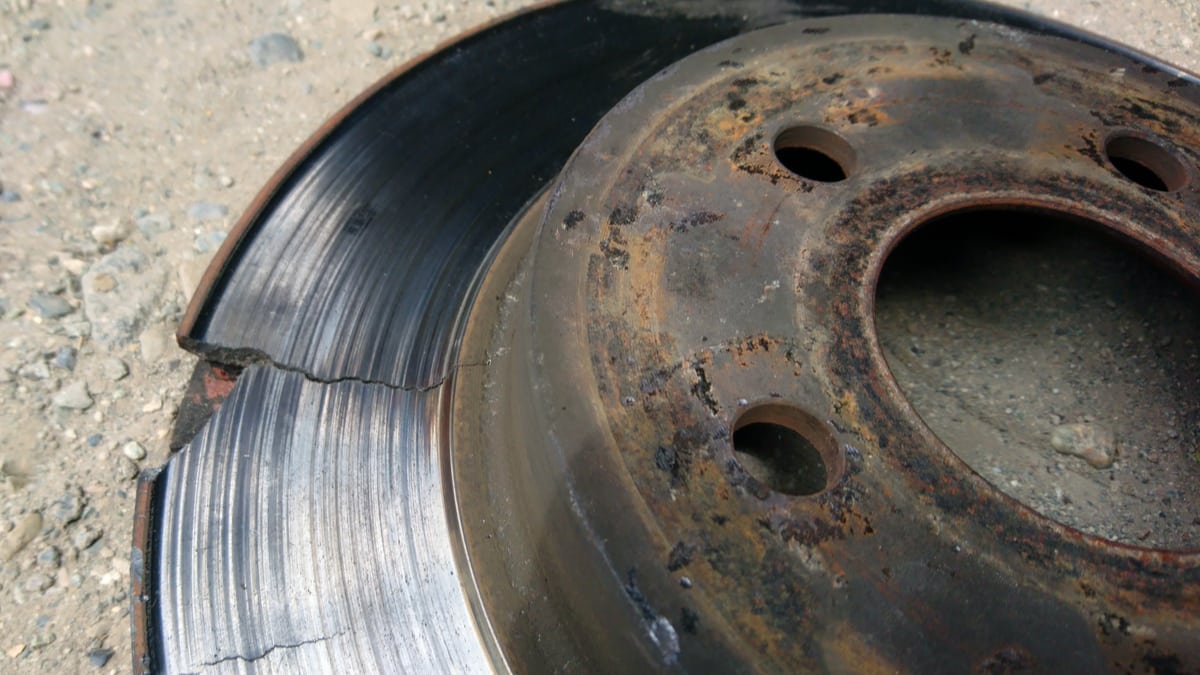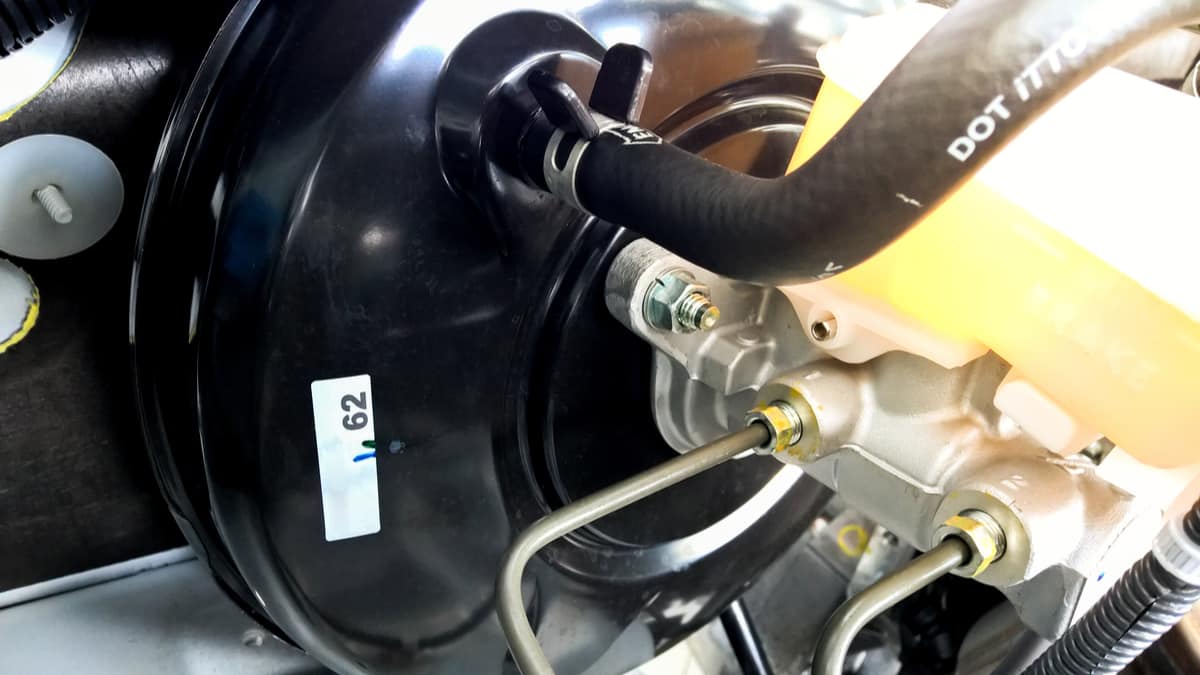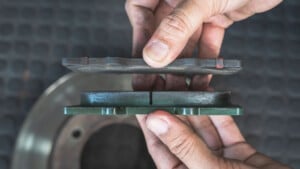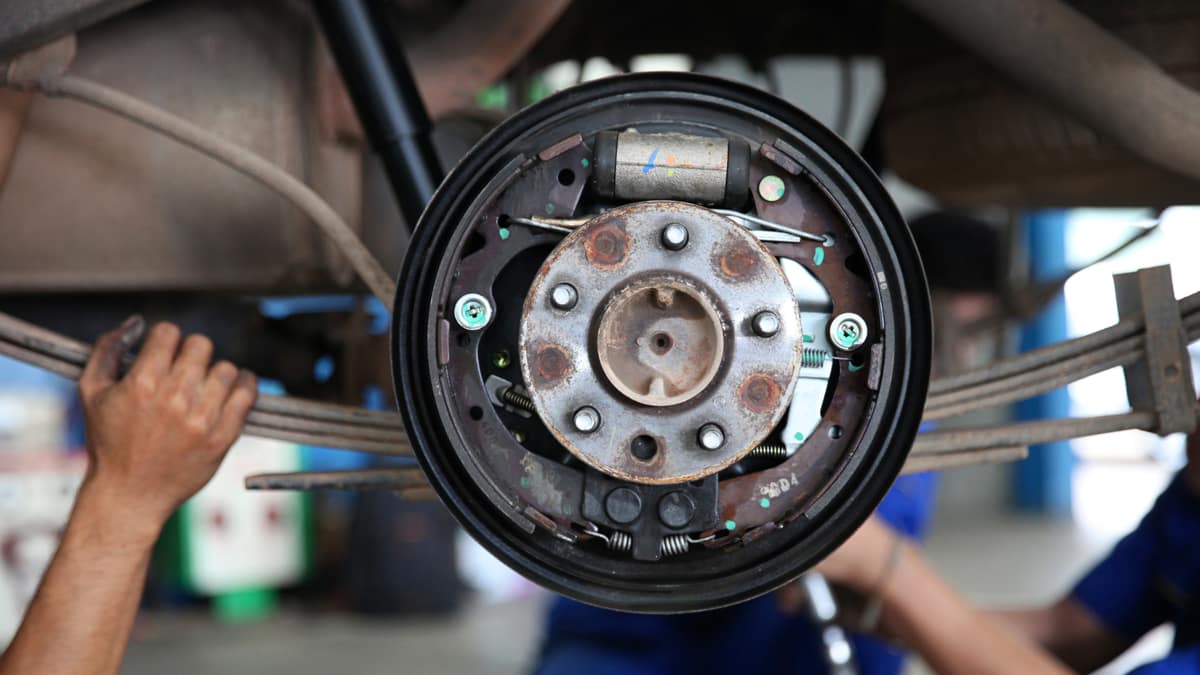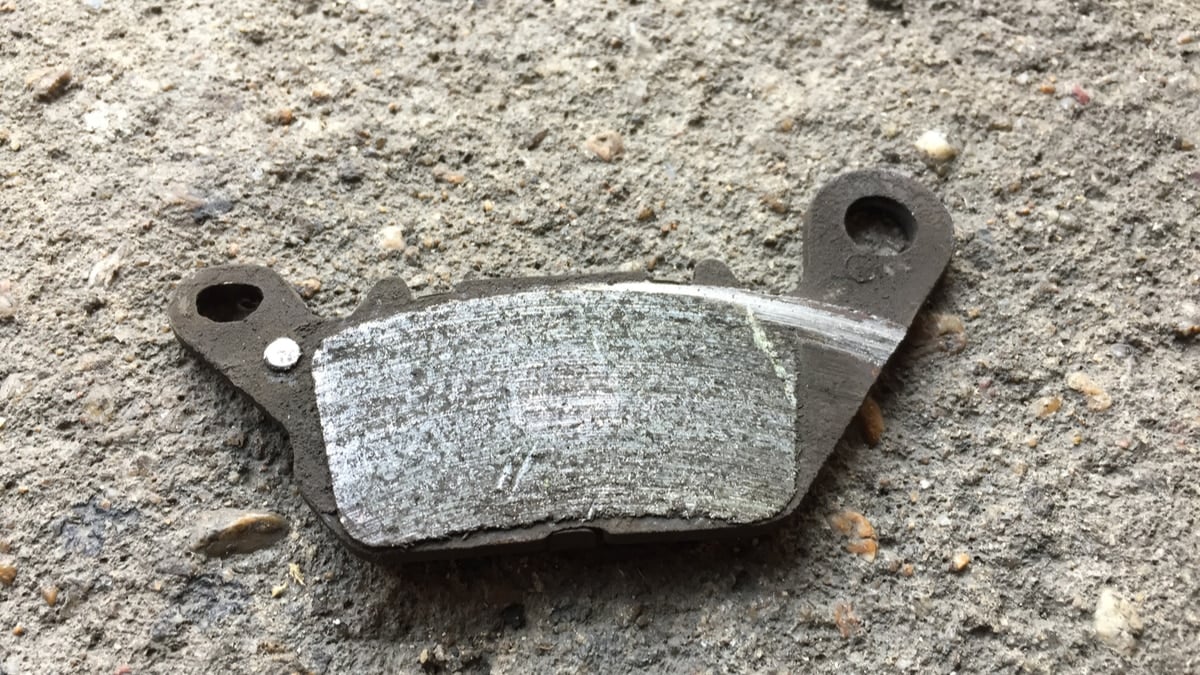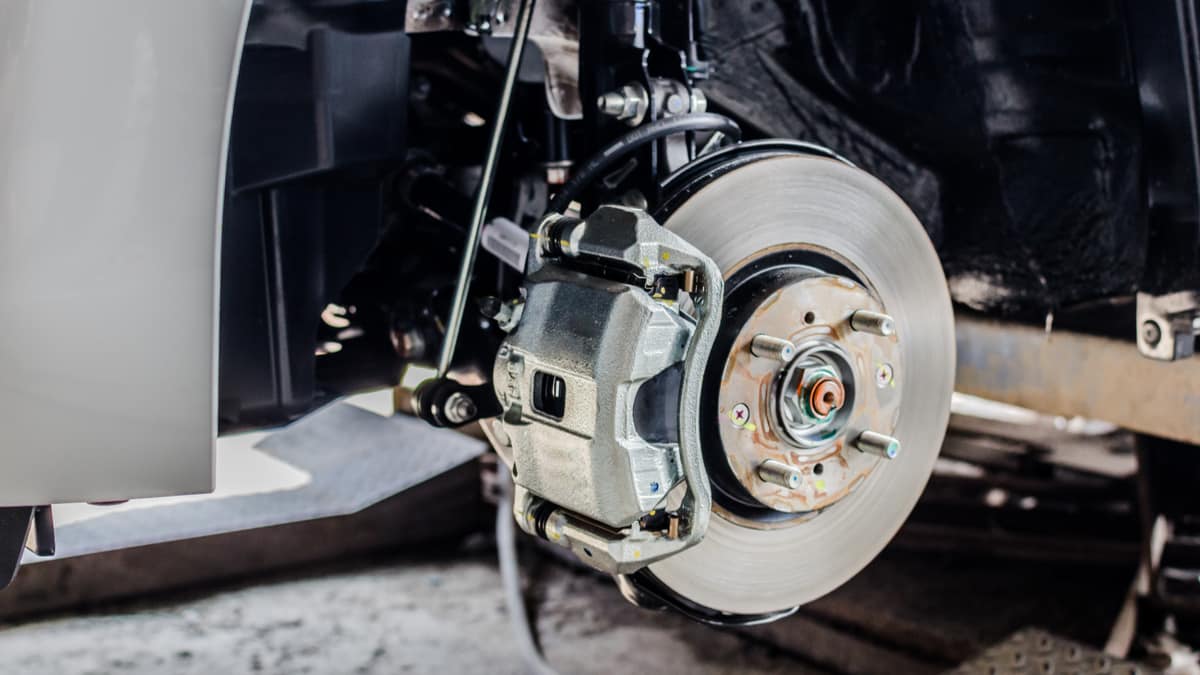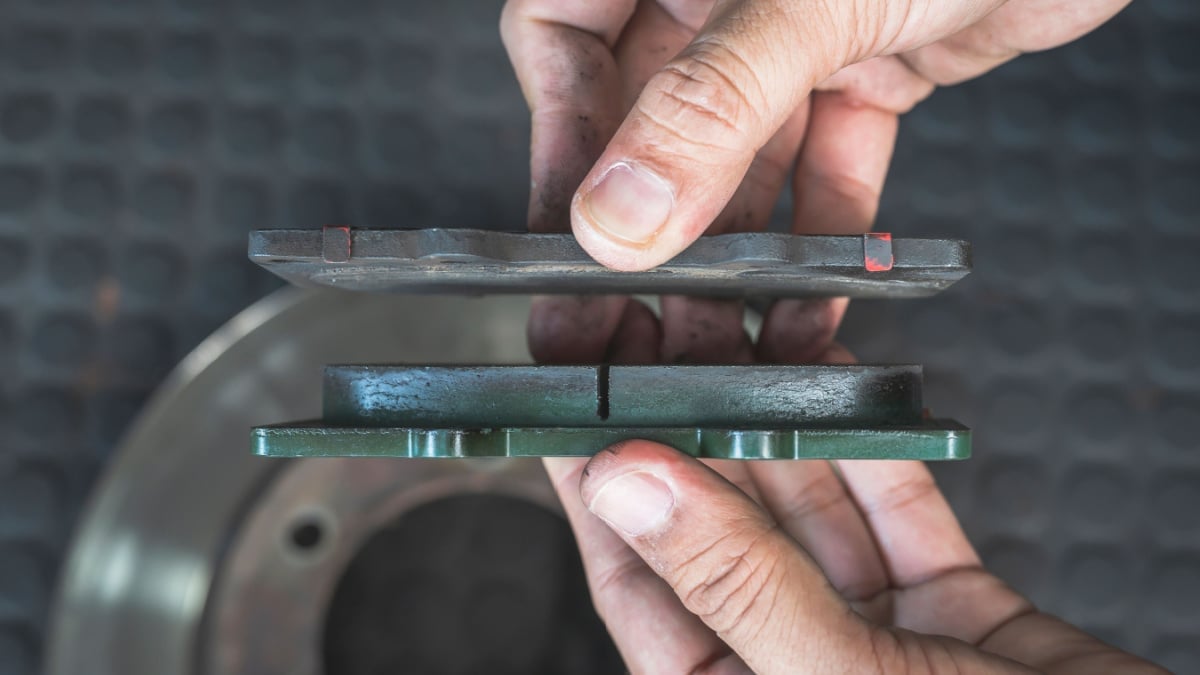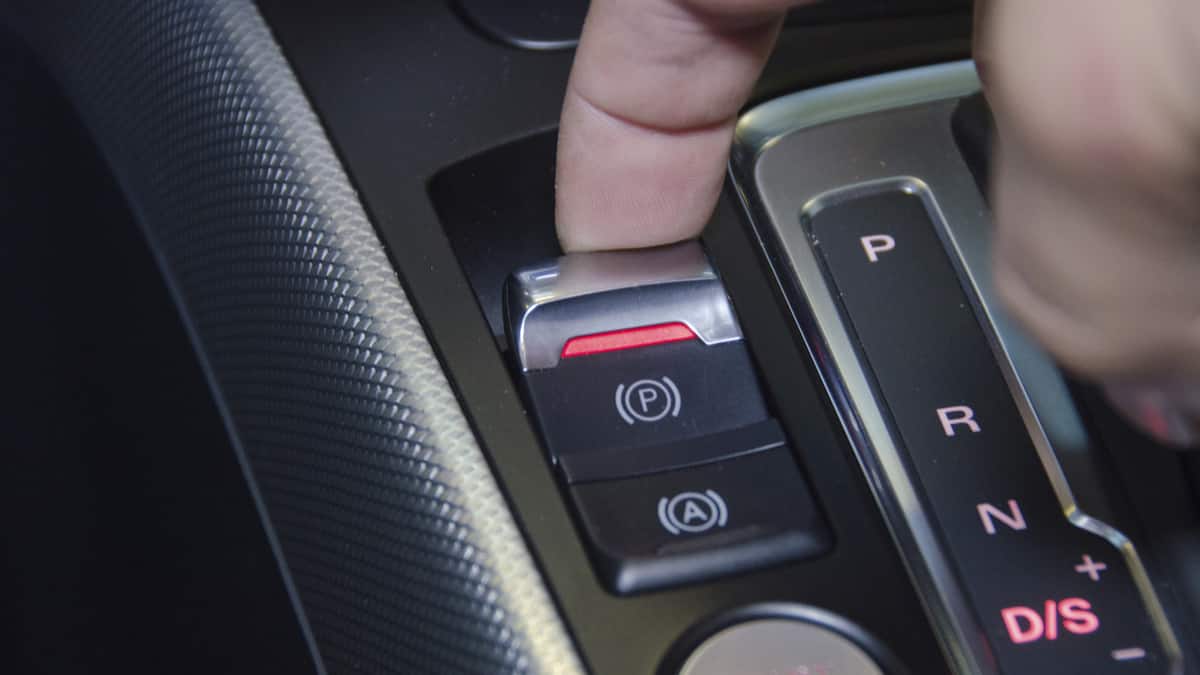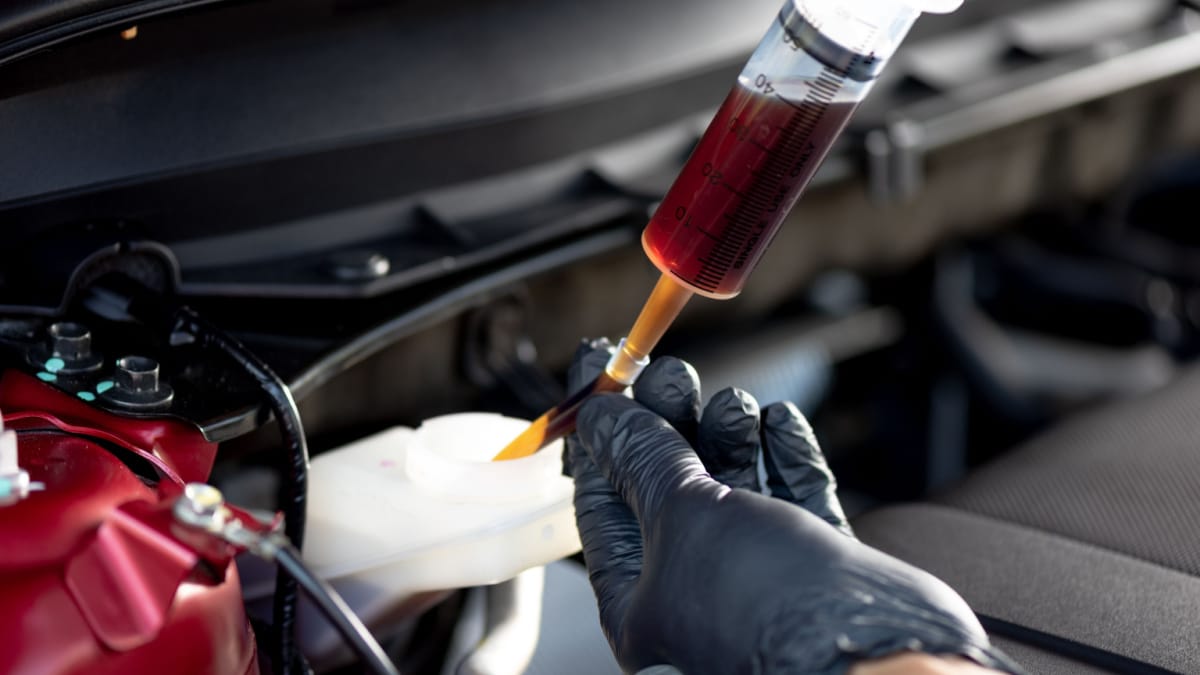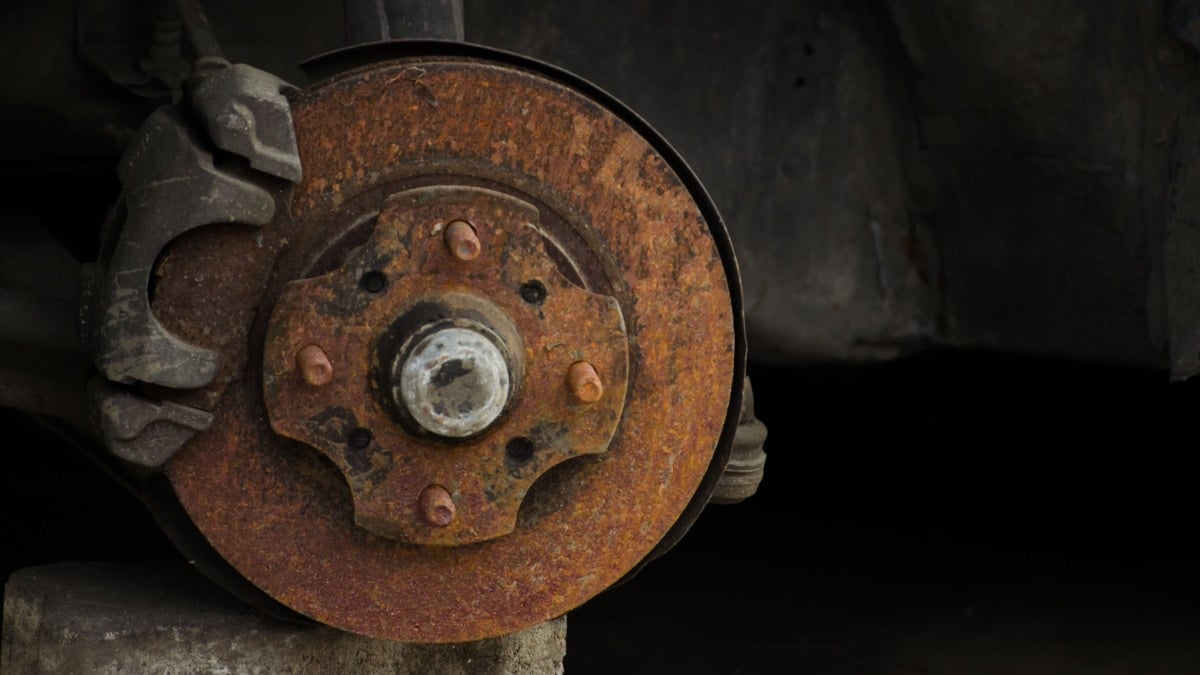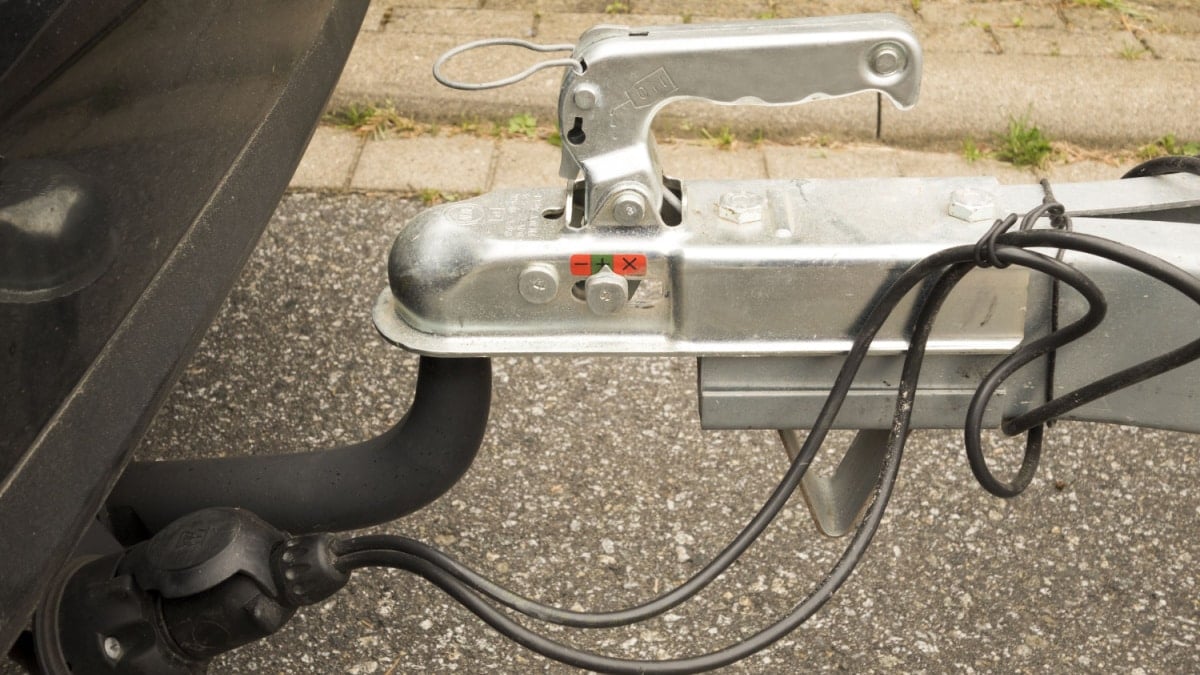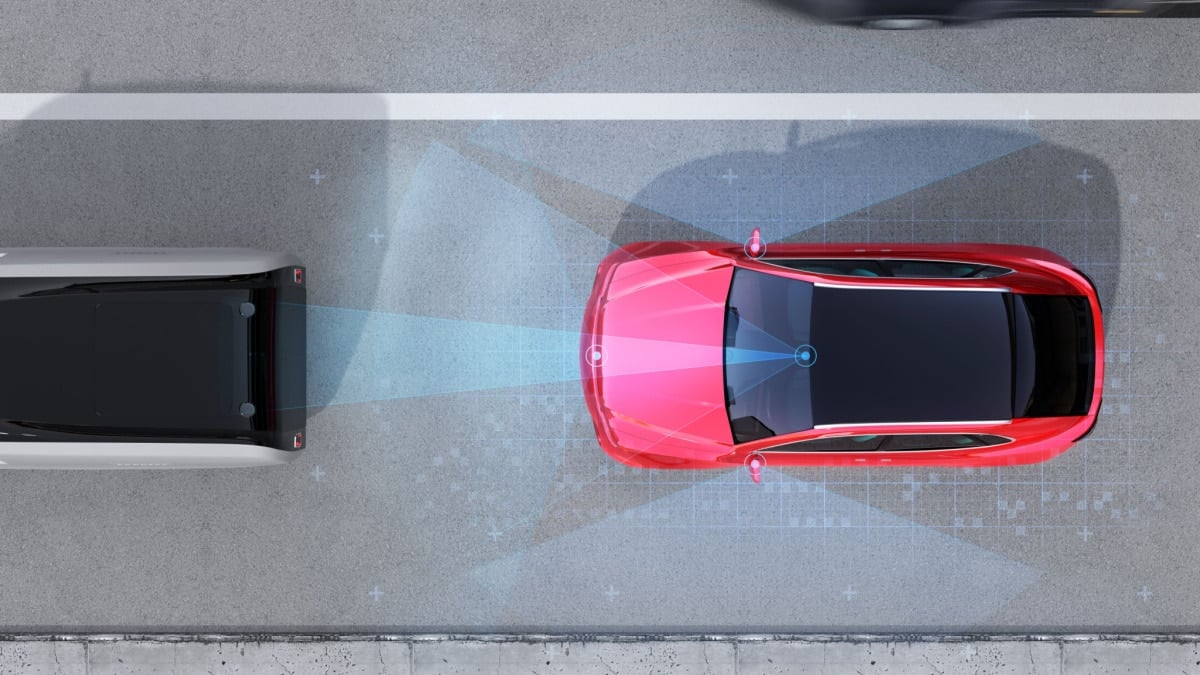There are few systems on your vehicle as important as the brakes. Without working brakes, you can’t adequately stop your vehicle in time. That’s why it’s important to replace the brake pads and rotors whenever necessary.
But how much does a brake pad and rotor replacement cost, and will it matter if you have just the front or rear changed, or should you get a complete change?
In this guide, I review all of the factors influencing these costs. I also discuss how often the brake components should be changed and show you the symptoms you may notice when it’s time. At the end of the guide, I talk about whether it’s okay to drive with bad brakes, although you probably already know the answer.
How Much Does a Brake Pad and Rotor Replacement Cost?
It will cost between $250 to $800 for a brake pad and rotor replacement on one axle, with the front brake slightly more expensive than the rear brakes. Therefore, a complete brake pad and rotor replacement for four wheels could cost $500 to $1,600.
Brake pad replacement costs about $100 to $300 per axle, with parts making up about $40 to $150 of the cost. If you also need to get the rotors replaced, the brake rotor replacement cost will be an additional $150 to $500 per axle.
READ MORE: How Much Does a Front Brake Job Cost? (Rotors, Pads & Additional Parts)
Factors Affecting Brake Pad and Rotor Replacement Cost
1. Vehicle Brand
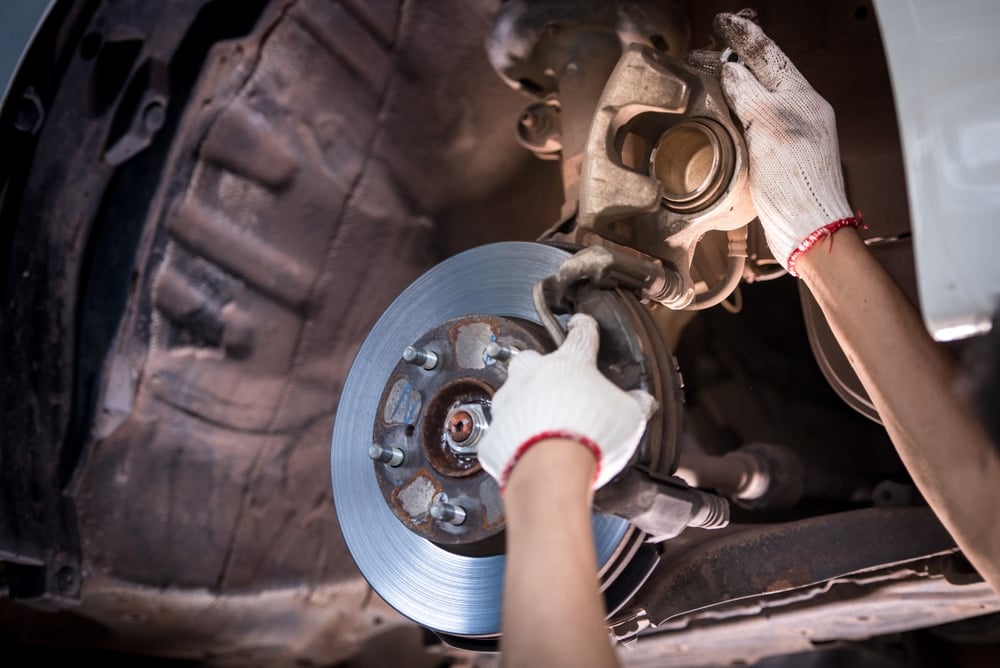
The brand of vehicle you drive has a profound effect on how much parts cost. Domestic parts can often be cheaper than foreign cars.
Additionally, if you have a European brand, such as an Audi, BMW, or Mercedes, you aren’t just going to pay more for the parts. In addition, you may need a special mechanic to work on these vehicles, which is going to cost you more labor.
2. Vehicle Model
Aside from what company made your car, you also have the model to consider. For example, among the Chevy lineup, getting brakes for a compact Cruze is much cheaper than the ones needed for your heavy-duty truck.
The weight and size of your vehicle have a lot to do with how big the brakes are, all of which affect the price. Depending on the model, it could also be harder to work on, requiring more labor.
3. Driving Habits/Environment
How do you drive your car? If you spend a lot of time on the highway, you probably don’t use the brakes as much as someone who commutes into the city every day. Additionally, if you are towing or hauling heavy loads, you are going to wear out your brakes much faster.
The environment you drive in must also be considered. If you are heading down dusty lanes or dirty trails, the brakes will endure more wear, requiring more frequent changes. All of these factors may also force you to purchase heavy-duty brakes, further adding to the cost.
4. Brake Material
Brakes come in a variety of types with various constructions. You can choose aftermarket or OEM parts, also with different materials.
It’s important that you research the various types, including semi-metallic, organic and ceramic. Evaluate the prices and see what each type brings to the table to determine which is best for your vehicle.
READ MORE: Ceramic vs. Organic Brake Pads (Which is Better?)
5. Front/Rear
When you get the brakes worked on, you won’t always need to get a four-wheel brake job including the pads and rotors. Very often, you may just need the front or rear brake pads changed.
For this reason, you shouldn’t have to put up the entire cost all at once. Instead, the cost is going to be spread out over time whenever the particular brakes go bad. However, you should always change the pads and rotors in pairs, either on the front or rear.
The front rotors are usually larger than the rear ones, and, therefore also somewhat more expensive if you want to replace them.
6. DIY or Professional
If you can change the brake pads or rotors on your own, you aren’t going to pay the labor charges. Instead, you only need the parts and any equipment necessary to complete the task.
However, if you have to take your vehicle to a professional, you can expect to pay a lot more. Plus, if you take your vehicle to a dealership, you are going to pay some of the highest labor rates.
How Often Should Brake Pads and Rotors Be Replaced?
There’s no set interval to have the brake pads or rotors changed. It all depends on your vehicle type and how you drive it. On average, brake pads should last anywhere from 30,000 to 70,000 miles. The rotors should last even longer than the pads, especially if you are performing regular service.
You can also have some brake rotors resurfaced instead of replaced. If there are minor imperfections to the rotor surfaces, it’s possible to have it ground down and made smooth again. This service costs a fraction of what it would be to replace them and adds some extra miles to its life.
LEARN MORE:
- How Often Should You Replace Brake Rotors? (Signs It’s Time)
- How Often Should You Replace Brake Pads? (5 Signs It’s Time)
What Are The Symptoms of Bad Brake Pads and Rotors?
The most common symptoms of bad brake rotors and pads are squealing or grinding noises when you press the brake pedal and longer stopping times. You may also notice vibrations when you press the brake pedal.
1. Strange Noises
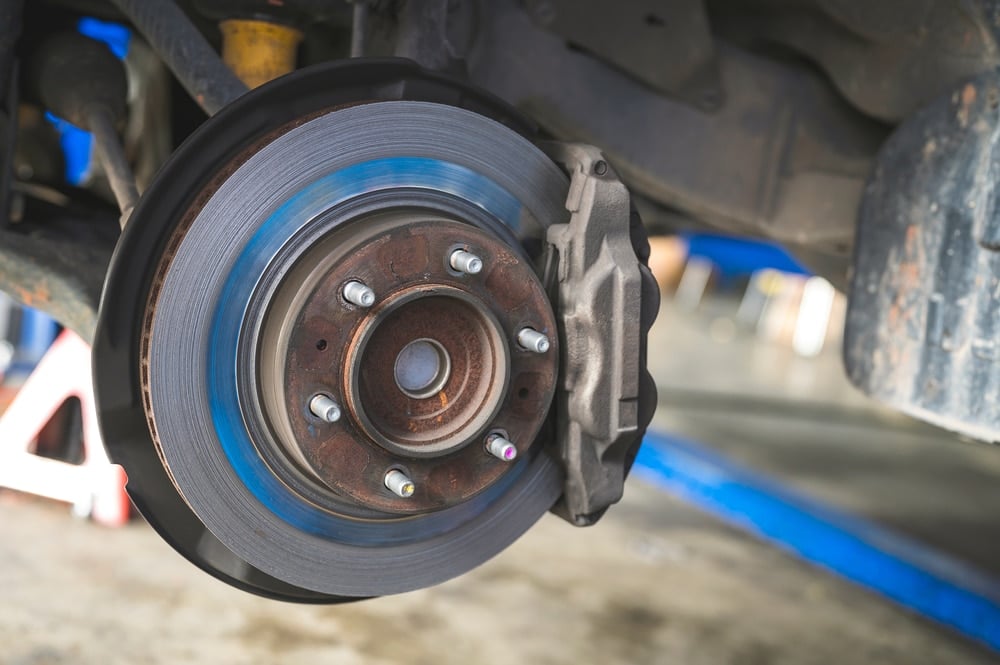
All you want during your daily drive is a quiet moment of peace. That’s blown out of the water when the brakes are going bad. At the beginning of the failure, you might hear some squealing every time the brake pedal is pressed. Normally, this sound is coming from the wear indicators on the brake pads, telling you it’s time for a replacement.
If you heed the warning and change the brake pads, you shouldn’t hear any more sounds. However, neglecting the brakes can mean you start to hear other noises. Any clicking or grinding noise is more serious and should be dealt with immediately. These sounds indicate that there’s a further failure in the brake system.
READ MORE: Grinding Noise When Braking? (Here’s How To Fix it)
2. Longer Stopping Times
The purpose of the braking system is to stop the vehicle. As the brakes wear, they become less effective at completing this job. This brake fade can be dangerous – especially as it worsens.
As you push the pedal, you will gradually notice a difference in the amount of time it takes before you stop. If you have to plan ahead to stop, it’s time to have the brake pads and rotors replaced.
3. Vibration
If you step on the brake pedal and notice strange vibrations, there’s something wrong. As the pads wear down, the rotors can start to heat up and warp the surface. This warping of the disc creates vibration as the system heats up.
This issue could be prevented by having the brake rotors and pads changed. If you don’t get the brakes changed and the system cleaned up, you risk having trouble stopping when you need it the most.
READ MORE: Car Shaking When Braking – Common Causes & What to Do
4. Pulling While Braking
When you stop a vehicle, the brake pads should stop both wheels uniformly. However, when one side begins to wear out faster than the other, you are going to notice uneven stopping patterns. The car could start to pull to one side when the brakes are pressed. If you leave this problem unchecked, you allow for wear to other vital components.
However, this symptom alone isn’t enough to indicate brake wear. In fact, it can come from a multitude of other issues, such as the wrong tire pressure, a stuck brake caliper, or a defective wheel bearing.
READ MORE: 7 Symptoms of Bad Brake Rotors (& Resurface Cost)
Can You Drive with Bad Brakes?
No. There are a lot of mechanical failures that can be babied for a certain amount of time until you can have them fixed, but that’s never the recommendation when dealing with your brake system. The main purpose of the car’s brake system is to stop the vehicle before an accident occurs.
As the pads and rotors wear, you won’t get the same amount of stopping power as you should. Unless you are properly able to gauge how long it will take to stop, you are putting yourself and others at risk. You could lose all braking power without any warning depending on what has failed.
Aside from that, procrastinating is only going to lead to higher repair bills. As an example, you may be able to get the front brake pads replaced for a minimum price at the first sign that something is wrong. If you choose to wait, the bad brake pads can cause excessive wear to the rotors, which only adds to the bill. On top of that, the added stress on the braking system can cause other vital components to break. Instead of worrying about what the cost may be down the road, get the problem fixed now to save yourself unneeded stress and money.
READ MORE: Brake Noise – Causes & Solutions (Low & High Speed)
Should I Replace All Four Brake Rotors And Pads?
No. It’s not required to replace all four brake rotors and pads if not all of them are worn. However, it’s required to replace the brakes on both sides on the same axle. If you choose to replace the brakes on only one side, the car will pull to one side when braking.
How Much Should A Full Brake Job Cost?
A complete brake job including brake rotors and pads on all four wheels will cost on average between $500 and $1,600, depending on the car model and a few other factors. If you have a luxury or sports car, you can expect to pay over $2,000 for a full brake job on all wheels.
How Long Does A Brake Job Take?
A brake job on one axle takes a mechanic between 30 minutes and 2 hours in most cases, depending on the car model and the age of the car. Therefore, it can take 1 hour to 4 hours to replace all four brake pads and rotors. But for a beginner, it may take several hours more depending on the experience.
Is It Worth Getting the Brakes Done At The Dealership?
It may be worth buying the parts from the dealer, as they are usually of a higher quality than aftermarket brakes. However, the dealer usually charges a lot more labor costs, and brakes are usually not that difficult to replace and can be replaced by any garage. But, if your car has an electric parking brake, the mechanic may need some special diagnostic tools for the vehicle.
Should Brake Pads Be Replaced With Rotors?
Yes. The brake pads should always be replaced if you change the rotors. The old brake pads will have grooves from the old brake rotors, and if you install new brake rotors but not new pads, brake performance will decrease drastically.
You can expect to pay between $500 and $1,600 if you want to replace all four brake pads and rotors. If you want to replace brake pads and brake rotors on one axle, you can expect a cost of $250 to $800. The front brake replacement is usually slightly more expensive than the rear brakes.
This price range can vary depending on the make and model of your car, as well as the quality of the pads and rotors you choose. If you are not experienced in car repair and feel that you don’t have the knowledge to do the job yourself, be sure to consult with a qualified mechanic or automotive specialist before making any decisions about replacing your brake pads or rotors.
Learn more:


